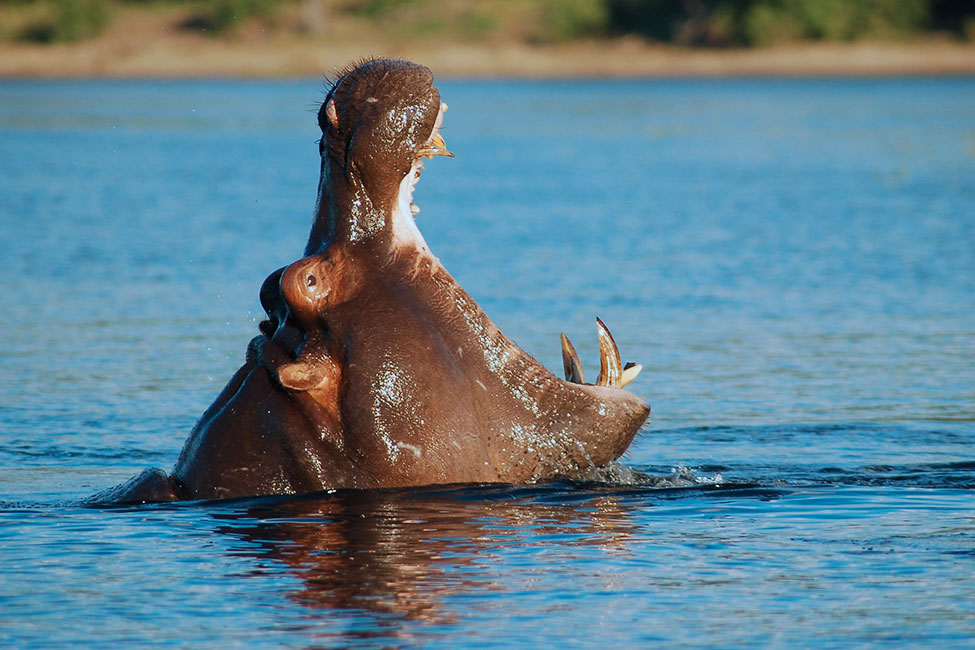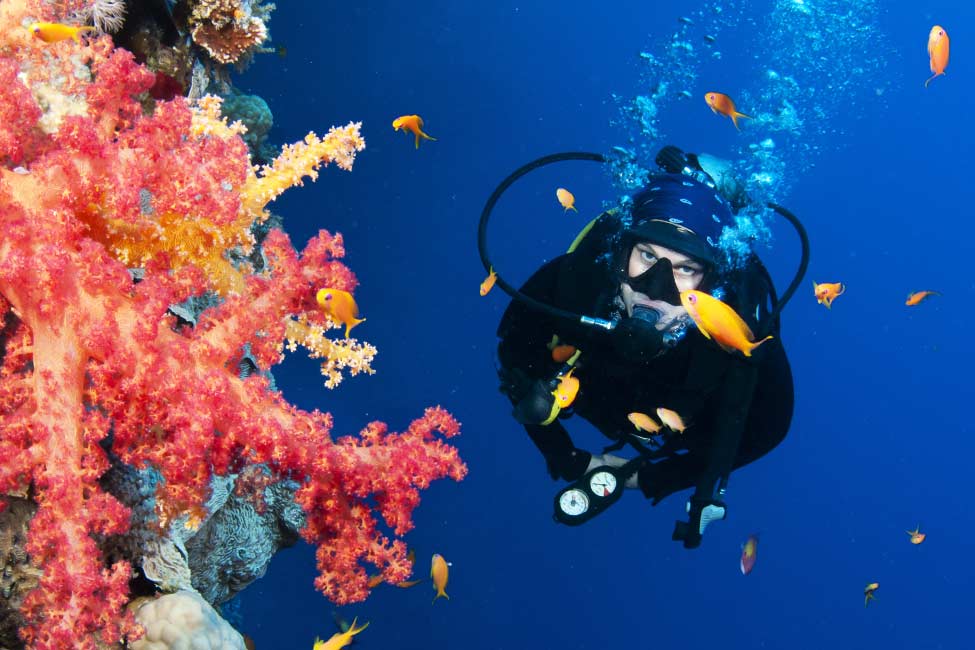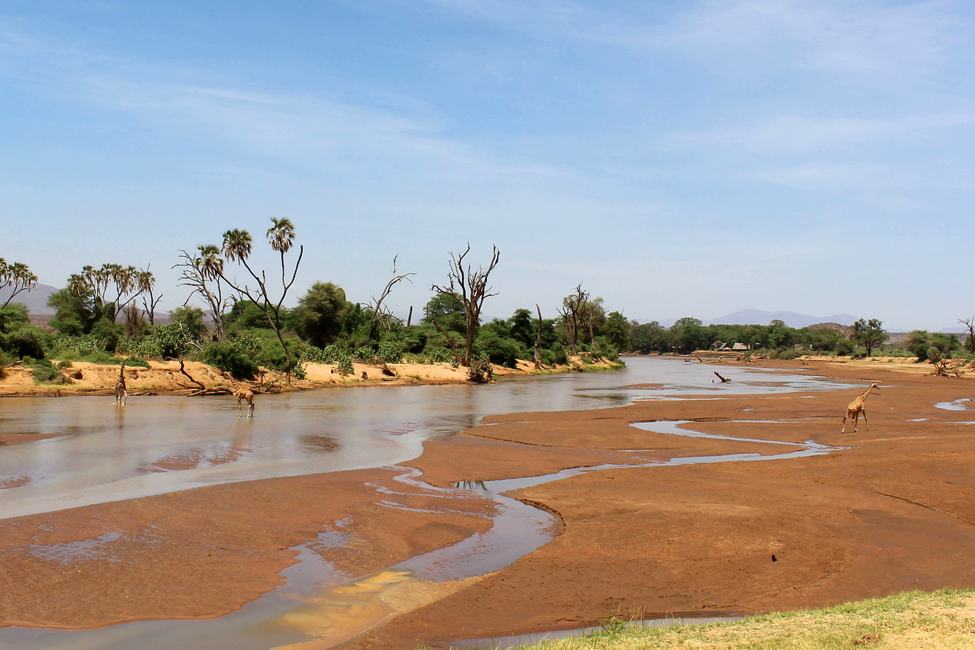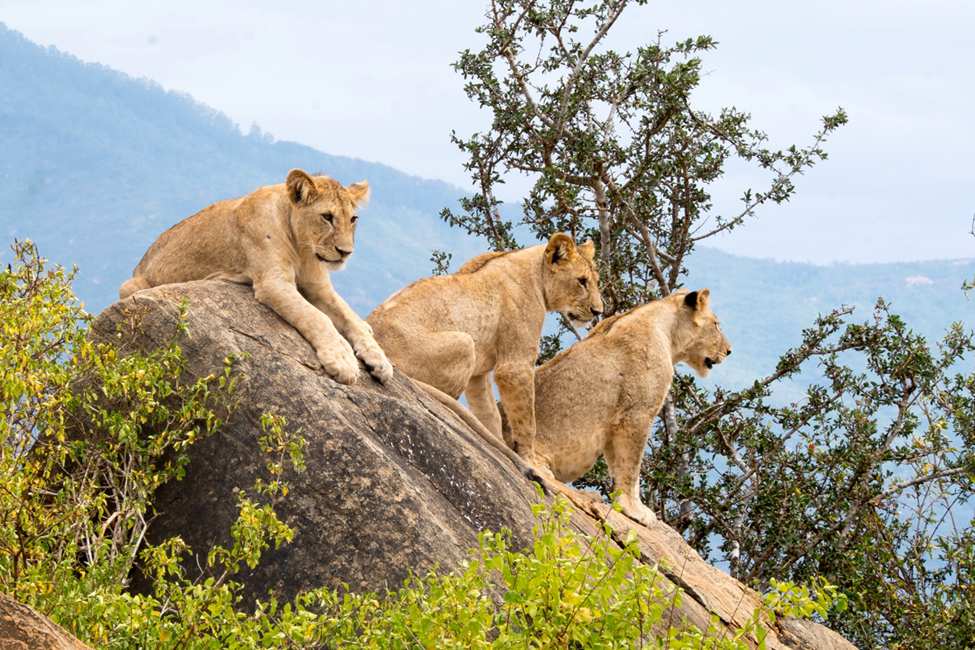Safari goers view elephants on the riverfront at Chobe National Park. Photo by Charles Leonard.
Why Chobe Riverfront is Perfect for 1-Day (and Longer!) Safaris
Located between Botswana to the south and Namibia to the north, the Chobe River is famous for its abundant wildlife. You’re likely to see more wildlife in a few hours than you might see in a few days at another wild area.
That makes the Chobe Riverfront a popular choice for day trips from Victoria Falls and Namibia’s Caprivi Strip. And since it’s close to an international airport, you can visit from more far-flung locations, as well.
Typically, day trippers wishing to explore the Chobe River go to the Serondela area of Botswana’s Chobe National Park, known locally as “the land of the giants” for its huge elephant population. For longer stays, both the Namibian and Botswanan sides offer excellent lodgings and unique cultural and wildlife experiences.
Read on for our top seven reasons the Chobe Riverfront is an ideal safari destination, our suggestions for getting the most of a day trip, and how to experience even more by staying multiple days.
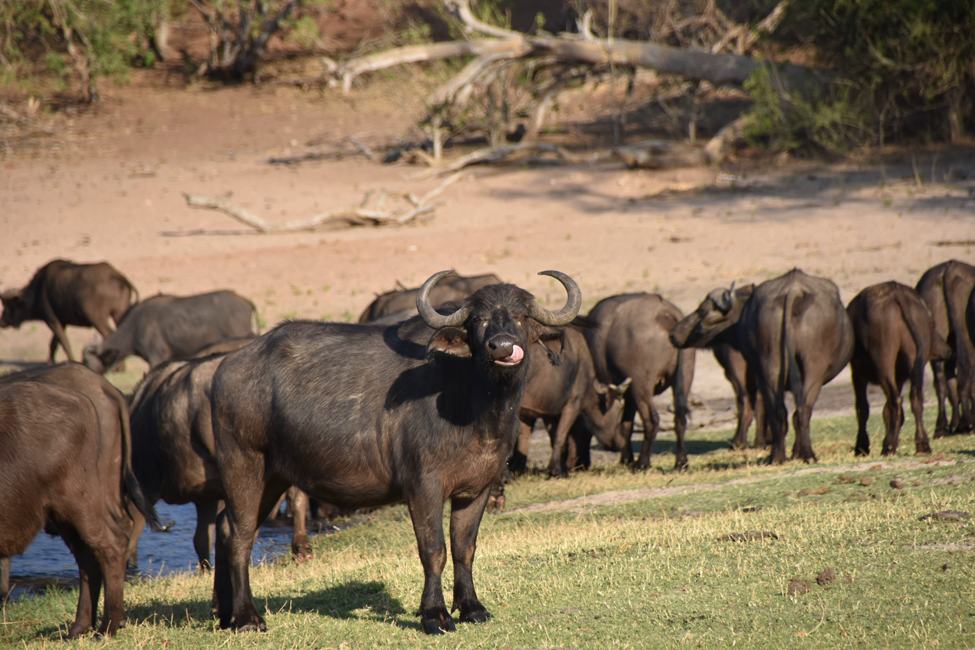
Cape buffalos, one of Africa’s Big Five, gather along the Chobe River in Chobe National Park.
Top 7 reasons to visit the Chobe Riverfront
1. Explore Chobe by land and water
The Chobe River fosters a unique ecosystem with one of the densest wildlife concentrations in Africa, both on land and water. On a day trip, you can spend half the day exploring the Chobe Riverfront by boat and half the day by 4×4 in Chobe National Park. You’ll see a huge array of aquatic, woodland, and savanna wildlife.
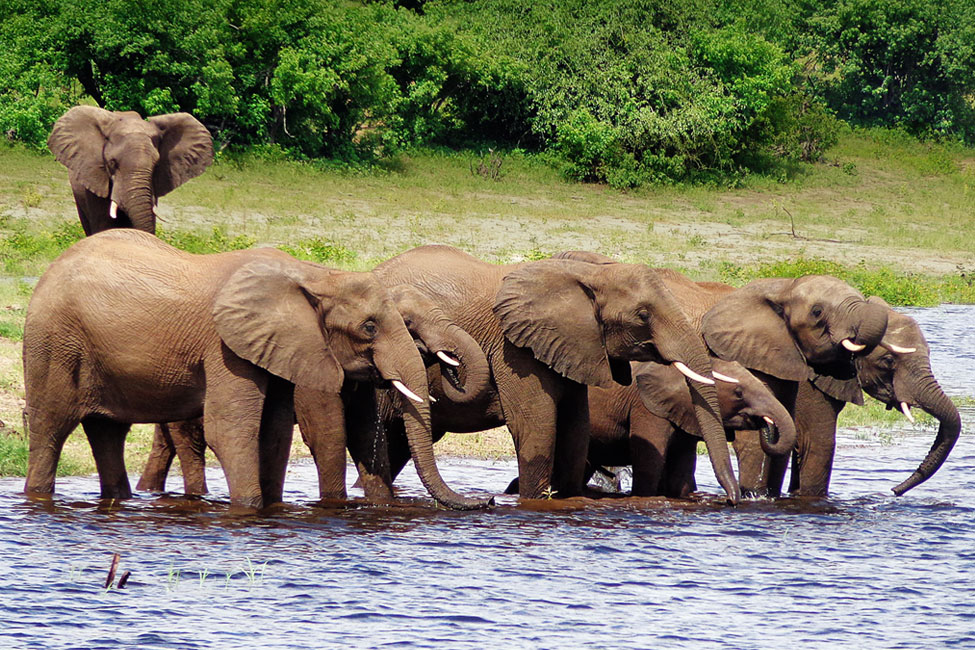
Elephants cool off on the Chobe riverfront at Chobe National Park, Botswana.
2. More elephants than you’ve ever seen!
Chobe National Park has a spectacular elephant population numbering in the thousands, and its Serondela area around the Chobe Riverfront is one of their favorite places to gather. Visitors have a very high chance of viewing large herds of elephants numbering more than one hundred along the Chobe Riverfront. Young elephants can frequently be seen playing in the shallow water on the edges of the river.
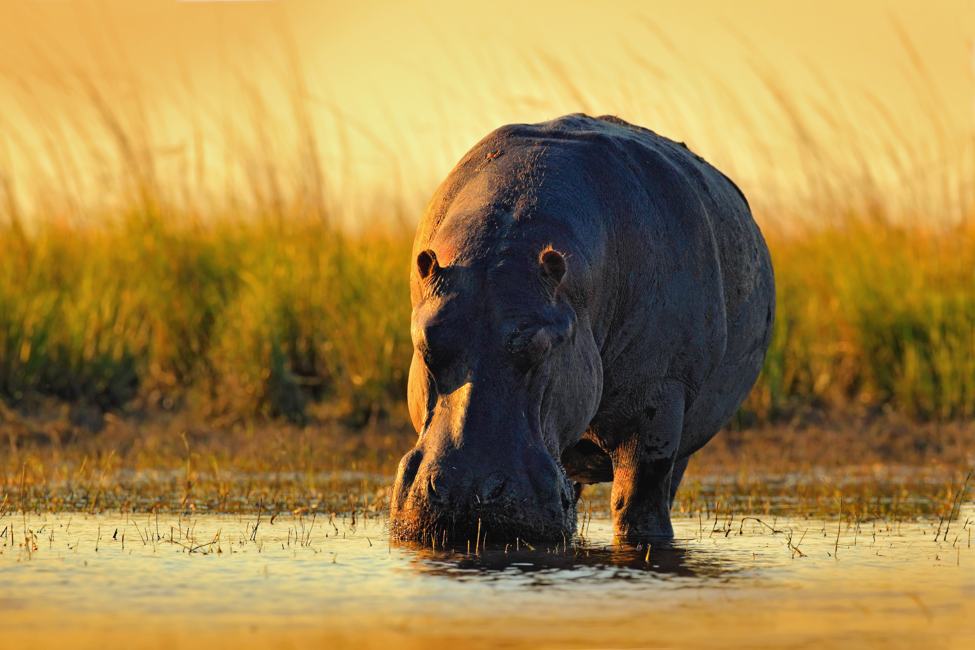
A hippo enjoys the refreshing waters of the Chobe River.
3. Hippos everywhere!
The Chobe Riverfront is one of the few places in the world where you can see hippos on land during the day. Elsewhere, hippos spend the day in water and come on land at night to graze. But here on the Chobe Riverfront, hippos are in fierce competition with elephants, Cape buffaloes, and other herbivores for food. Getting out of the water during the day gives hippos more opportunities to graze.
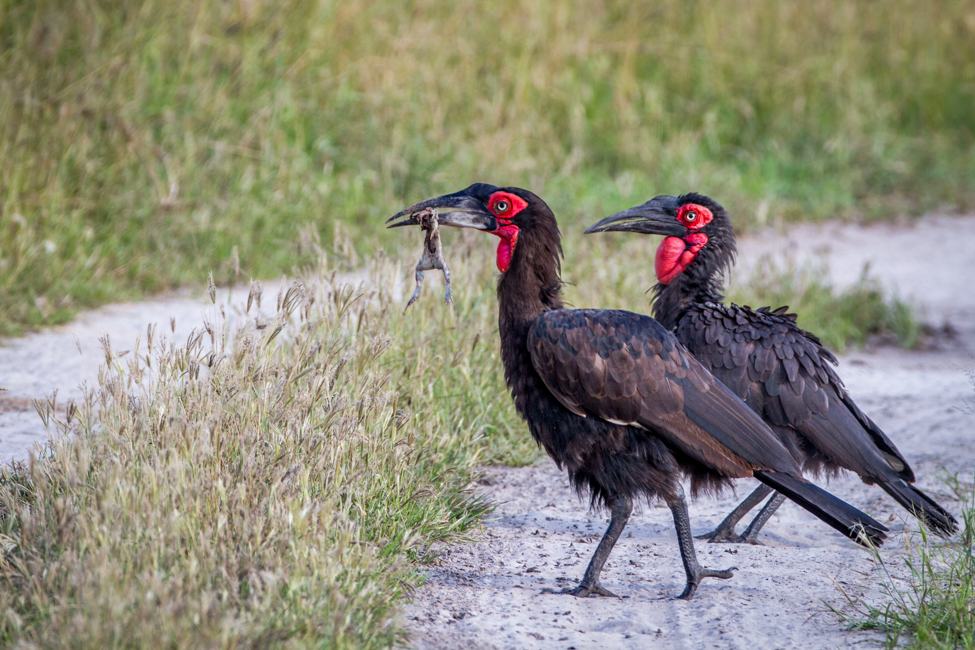
Southern ground hornbills are among the remarkable wildlife you might see near the Chobe River.
4. Chobe River’s incredible diversity of wildlife
In addition to elephants and hippos, you can watch lion prides on the hunt, herds of Cape buffalo grazing, and lone crocodiles sunbathing on the Chobe Riverfront.
Animal diversity here is truly outstanding. Antelopes are abundant, including kudus, red lechwes, sables, roans, bushbucks, impalas, and pukus, which are otherwise uncommon in southern Africa. Other favorite safari animals along the Chobe Riverfront include African wild dogs, leopards, zebras, giraffes, wildebeest, hyenas, black-backed jackals, warthogs, and baboons—plus a whole lot more.
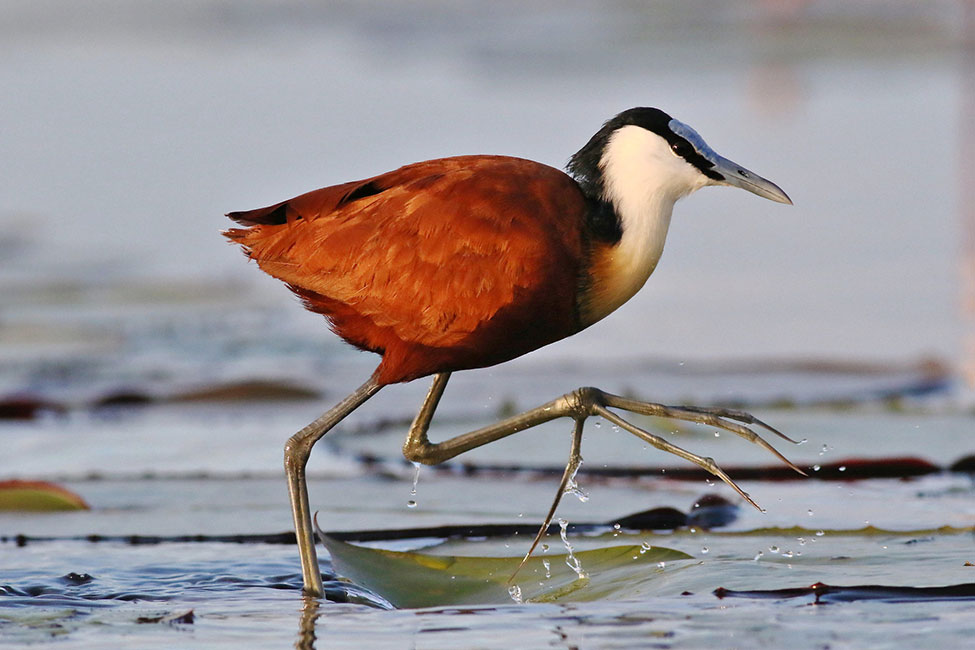
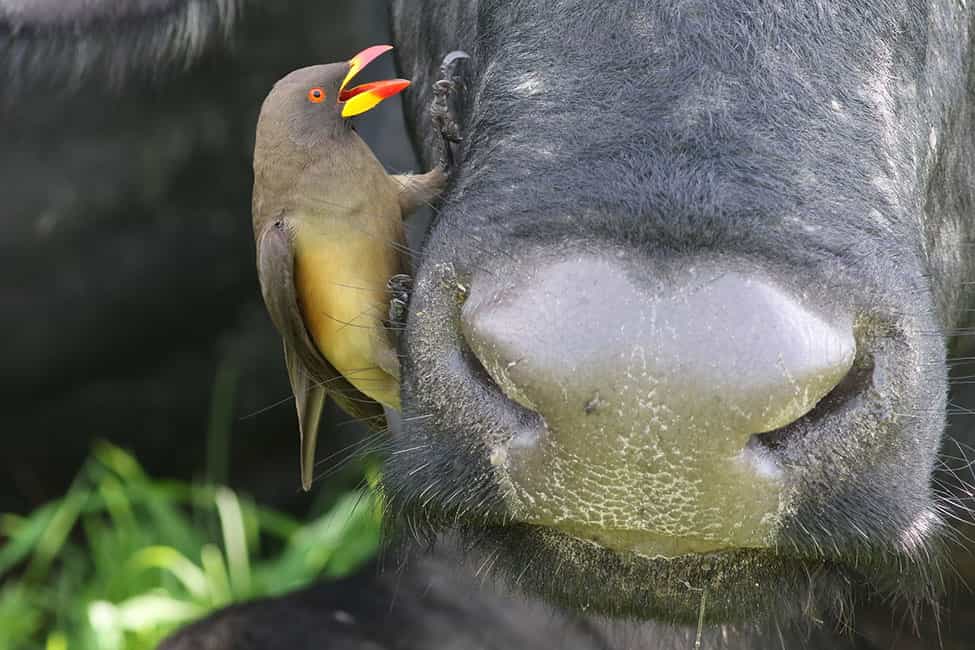
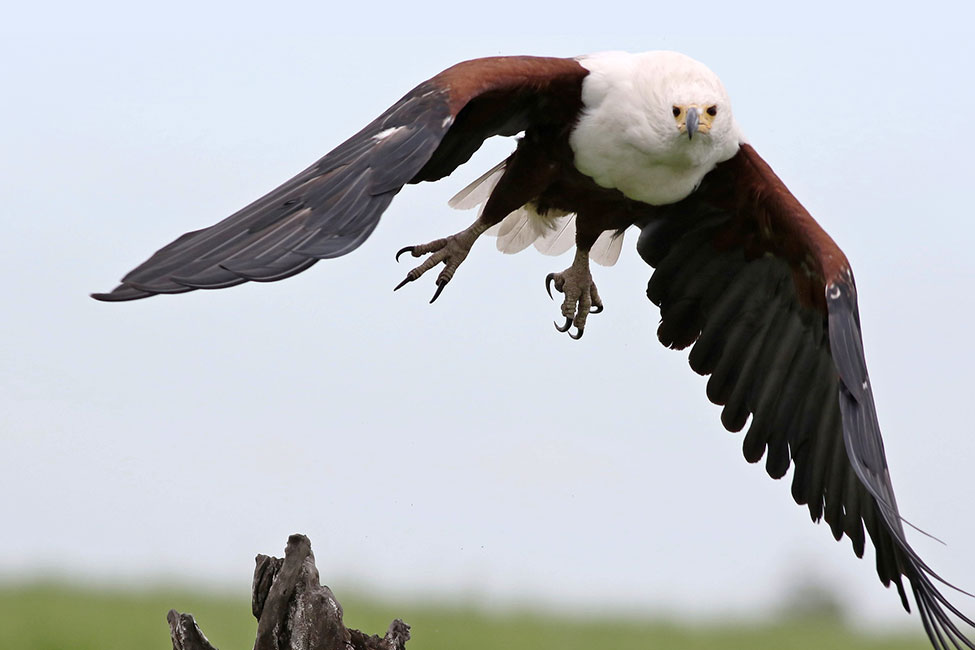
An African jacana wades in the Chobe River; a yellow-billed oxpecker on a Cape buffalo; an African fish eagle in flight. Photos by Derek Keats.
5. See birds you’ve never seen before
Birdwatching on the Chobe Riverfront is spectacular throughout the day, not just in the early morning and late afternoon hours. Avid birders will be happy to know that you can find specialist guides to help you expand your life list on either side of the river, with eBird hotspots in both Botswana’s Chobe National Park and Namibia’s Impalila and Kasika Conservancies. You have an excellent chance of spotting multiple species of hornbills, kingfishers, raptors, bee-eaters, plovers, herons, storks, ibises, oxpeckers, and more.
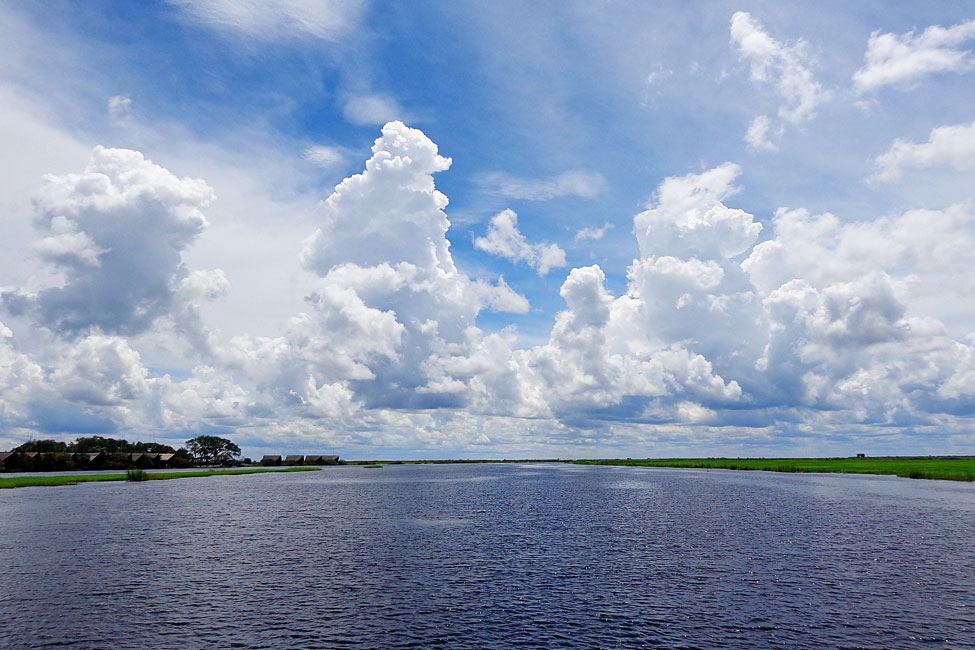
View of the Chobe River. Photo by Ujuzi Travel.
.
6. The scenery is spectacular
The Chobe River itself is quite beautiful, with grassy islands in the center and scenic shores on both sides.
7. Chobe Roverfront is easy to get to
Thanks to its location on an international border, you have your pick of countries to stay in when visiting the Chobe Riverfront: Botswana, Namibia, Zimbabwe, and Zambia. If you’re in a hurry, you needn’t stay at all—you can fly into Botswana’s nearby Kasane International Airport in the morning and fly out again in the evening.
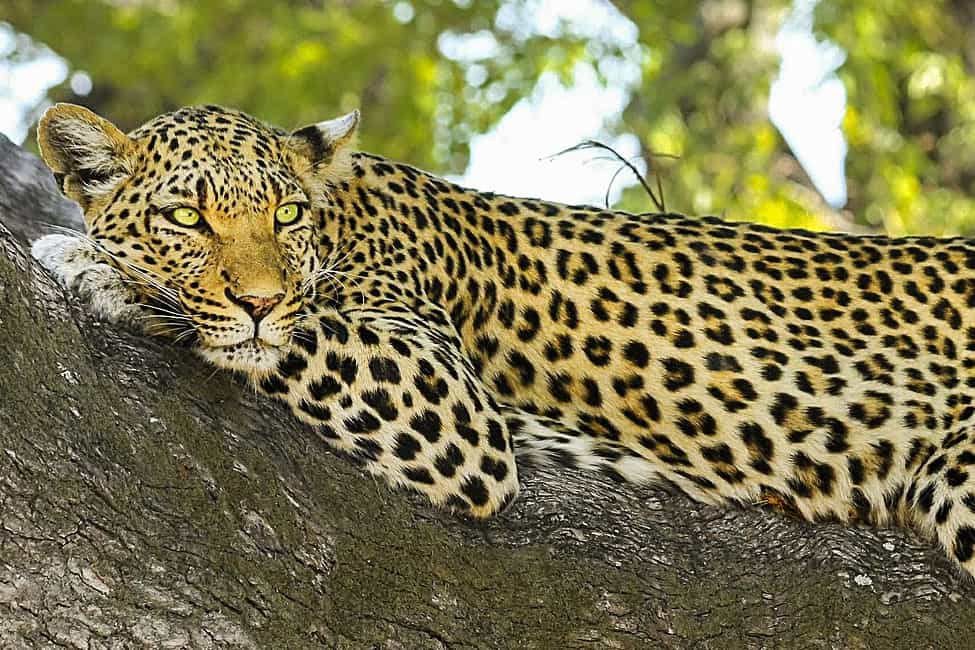
A leopard relaxes in a tree in Chobe National Park near the Chobe Riverfront.
How to spend a day on the Chobe Riverfront
For day trips, we recommend visiting the Serondela area of Botswana’s Chobe National Park.
Start the morning with a ride from your lodge or Kasane airport. If you need to cross borders into Botswana, don’t worry—border controls are very efficient near the Riverfront and shouldn’t delay your arrival.
Morning Boat Cruise
Spend the morning hours on a river safari. Your guides will point out remarkable wildlife you may not have seen elsewhere in Africa, such as red lechwe antelopes and black herons. View aquatic animals up close, including hippos and perhaps a baby crocodile.
You will be surprised at how many land mammals you can view from the river. Large elephant herds frequently congregate at the riverbank, especially during the dry season.
Lunch
Enjoy a picnic lunch provided by your hotel, or visit a lodge on the banks of the river for a freshly cooked meal.
Afternoon Game Drive
After lunch, embark on an afternoon game drive through Chobe National Park. You’ll have the chance to see more elephants, as well as antelopes, guineafowl, monitor lizards, kori bustards, jackals, and lions. If you’re really lucky, you might even spot an African wild dog!
Love plants? Let your guide know. Travelers may exit vehicles in designated areas to get a better look at endemic flowers, shrubs, and trees.
Return to Your Lodge
As the sun lowers in the sky, it’s time to leave the park. But before you return to your accommodations, enjoy a spot of tea and a snack at a nearby lodge as you take in the scenery one last time.
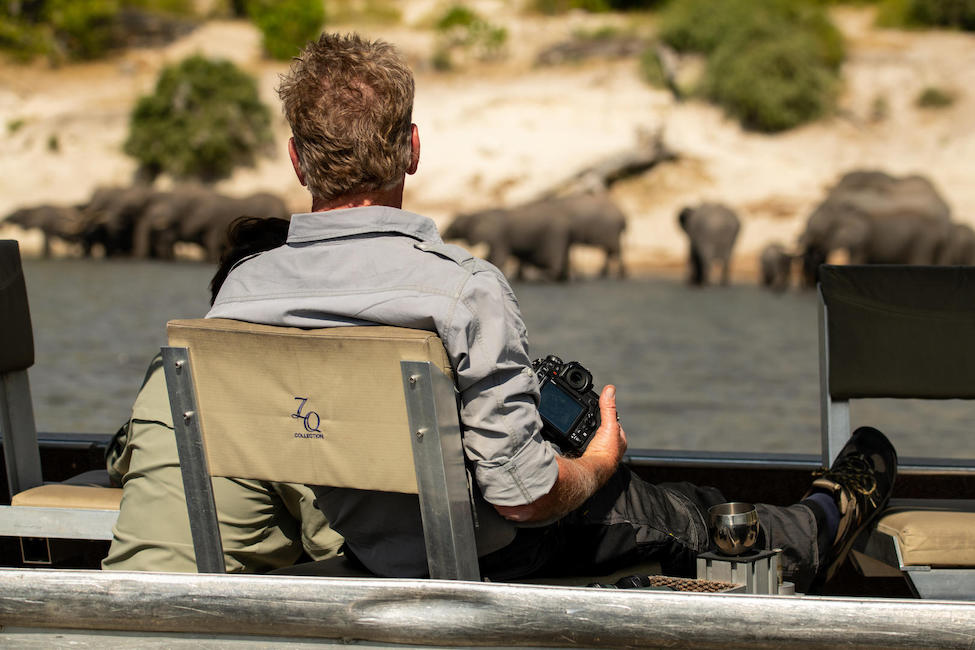
A Zambezi Queen guest enjoys a day excursion on a tender boat to get an even closer view of wildlife on the Chobe Riverfront. Photo courtesy of Zambezi Queen.
See wildlife from your bed on a multi-day Chobe River cruise
The Chobe Riverfront is so phenomenal, you may never want to leave. The good news: this area is home to several excellent lodges, so you aren’t limited to just one day! You can even sleep on the river itself if you stay on the Zambezi Queen, a floating luxury hotel that docks on the Namibian side of the river for the best sunset views. Thanks to floor-to-ceiling glass windows and cozy balconies, you won’t have to leave your room to spot the wildlife here. But you’ll want to, if only to enjoy the views from the plunge pool on the deck.
For up-close game viewing and birdwatching, take a trip closer to shore in a tender boat equipped for photography. You’ll also have the chance to learn about the local Sibya culture with a village visit or partake in catch-and-release fishing for the elusive tiger fish. Check out our sample 3-night Chobe Riverfront cruise itinerary for more details.
Looking for an even more exclusive experience? Ujuzi can arrange a private, fully-staffed houseboat for your group with access to the same incredible activities.
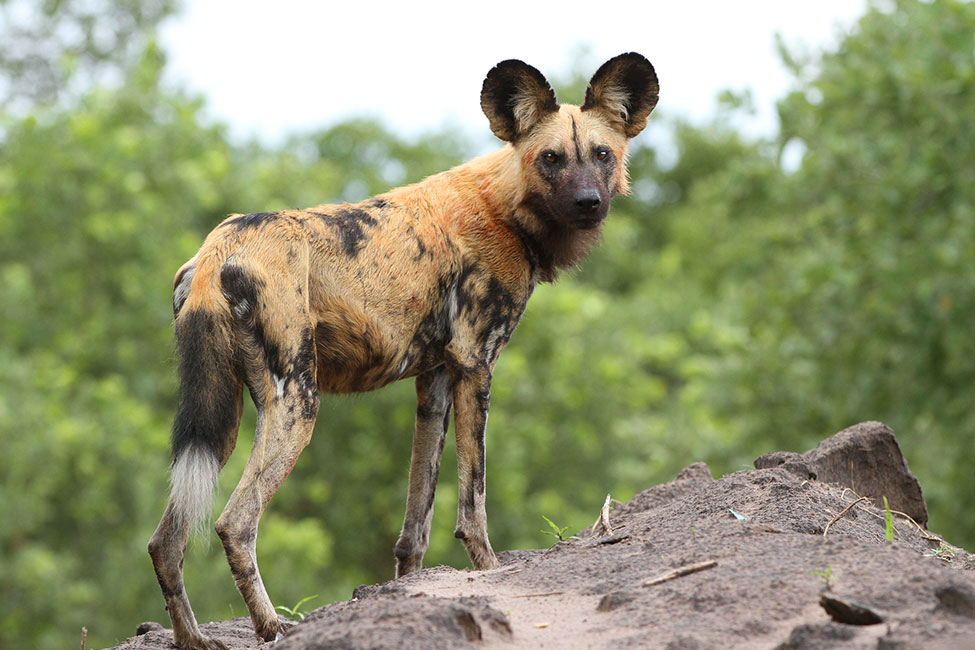
African wild dogs are sometimes seen in Serondela.
Plan your trip to Chobe Riverfront
Ready to plan your trip to Chobe? At Ujuzi African Travel, we develop custom itineraries to create the safari of your dreams. Whether you’re looking for luxury or prefer a more intimate connection with the wilds, we offer accommodations and activities to suit your desires. Contact us today!
Sign up for the Ujuzi Newsletter!
From top travel tips to innovative safaris and conservation movement, get inspired to plan your next African safari!
By submitting this form, you are consenting to receive marketing emails from: . You can revoke your consent to receive emails at any time by using the SafeUnsubscribe® link, found at the bottom of every email. Emails are serviced by Constant Contact


